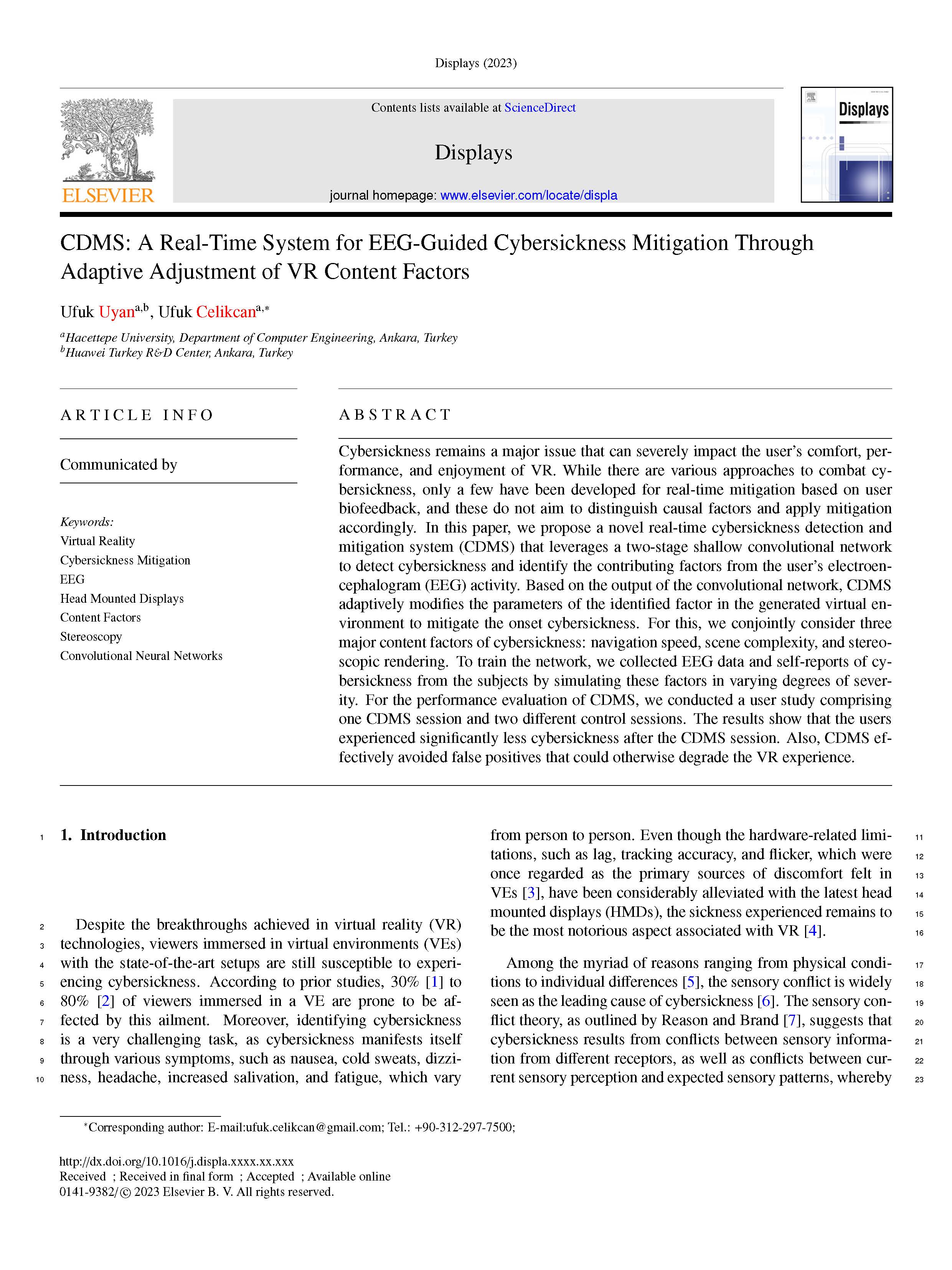

Paper
Ufuk Uyan, Ufuk Celikcan. "CDMS: A Real-Time System for EEG-Guided Cybersickness Mitigation Through Adaptive Adjustment of VR Content Factors", Displays (2024).
Preprint
Please kindly cite our paper in your publication if you use this dataset or code:
@article{uyan2024cdms,
title={CDMS: A real-time system for EEG-guided cybersickness mitigation through adaptive adjustment of VR content factors},
author={Uyan, Ufuk and Celikcan, Ufuk},
journal={Displays},
pages={102704},
year={2024},
publisher={Elsevier}
}
Abstract
Cybersickness remains a major issue that can severely impact the user’s comfort, performance, and enjoyment of VR. While there are various approaches to combat cybersickness, only a few have been developed for real-time mitigation based on user biofeedback, and these do not aim to distinguish causal factors and apply mitigation accordingly. In this paper, we propose a novel real-time cybersickness detection and mitigation system (CDMS) that leverages a two-stage shallow convolutional network to detect cybersickness and identify the contributing factors from the user's electroencephalogram (EEG) activity. Based on the output of the convolutional network, CDMS adaptively modifies the parameters of the identified factor in the generated virtual environment to mitigate the onset cybersickness. For this, we conjointly consider three major content factors of cybersickness: navigation speed, scene complexity, and stereoscopic rendering. To train the network, we collected EEG data and self-reports of cybersickness from the subjects by simulating these factors in varying degrees of severity. For the performance evaluation of CDMS, we conducted a user study comprising one CDMS session and two different control sessions. The results show that the users experienced significantly less cybersickness after the CDMS session. Also, CDMS effectively avoided false positives that could otherwise degrade the VR experience.